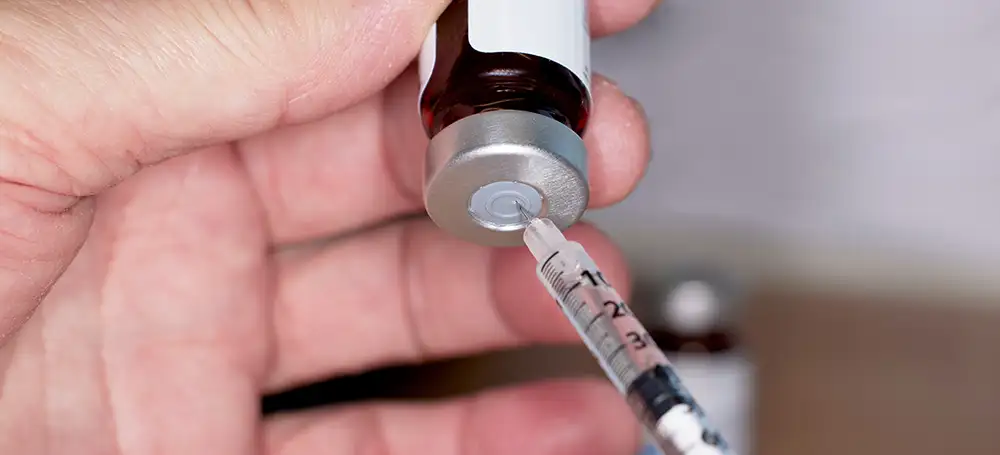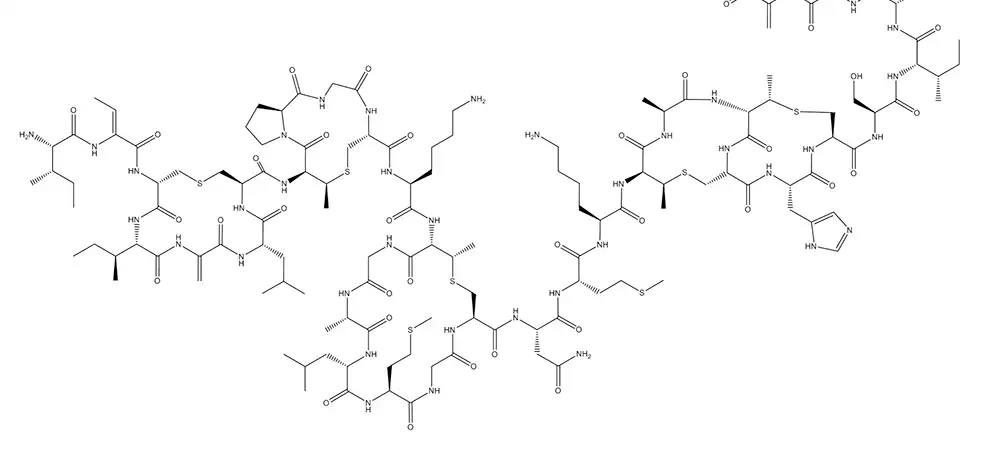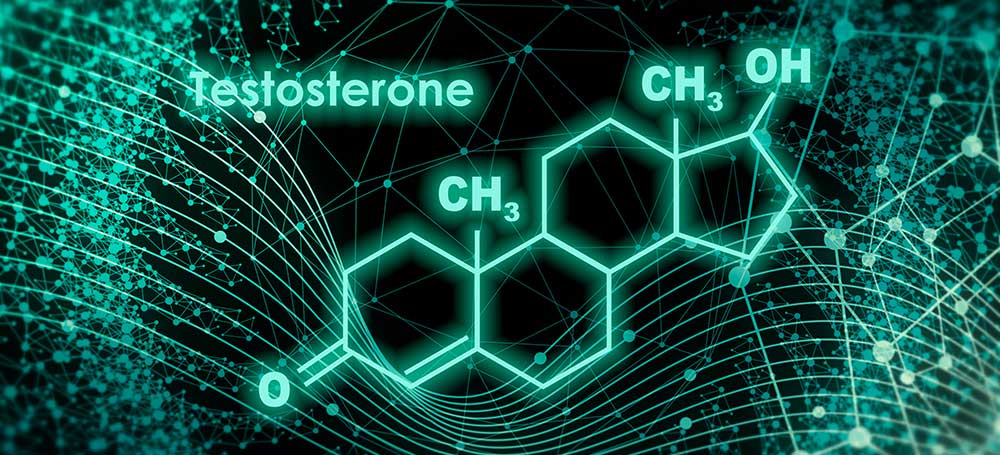Testosterone is the male hormone that plays a key role in what it means to be a man. Your testosterone levels ramp up as you reach puberty, causing you to move from boyhood into adolescence and manhood. Testosterone fuels your sex drive and sexual function, and it’s key to the development of muscle strength and to the production of sperm and red blood cells.
As you age, your testosterone levels start to fall naturally, beginning in your 30s. Most men experience a drop in their testosterone levels of 1% a year — and for many men, this results in significant physical symptoms. The good news is that you can fight back against this loss of testosterone through testosterone replacement therapy. Let’s take a deeper look at the benefits of testosterone replacement therapy and when it’s the right choice.
What is Testosterone Replacement Therapy?
Testosterone replacement therapy is the treatment of choice for men whose testosterone levels have fallen below the normal range. Men can choose from several delivery methods, including testosterone gels, testosterone injections, testosterone patches and testosterone pellets placed below the skin. The replacement of depleted testosterone allows men to do away with the symptoms that accompany low testosterone.
When is Testosterone Replacement Therapy Necessary?
Testosterone replacement therapy can become necessary when a man’s testosterone levels drop below the normal range of 300 to 1,000 nanograms per deciliter. Those levels can only be ascertained through blood tests.
However, men may experience the symptoms of testosterone deficiency without being aware of the cause. These symptoms can include decreased sex drive, erectile dysfunction, weight gain, loss of muscle mass, decreased focus, a drop of self-confidence, depression, mood swings and difficulty concentrating. Because these symptoms can also have other causes, it’s important to see a men’s health doctor to determine the true cause and to test whether testosterone replacement therapy is the right treatment.
The Benefits of Testosterone Replacement Therapy
Testosterone replacement therapy is a long-term therapy that can greatly improve the life and well-being of men struggling with the symptoms of low testosterone. While some men seek out testosterone therapy because of one or two symptoms they’re concerned about, they often find themselves surprised and pleased by the improvements they see in other areas.
Testosterone replacement therapy has effects across both the body and the mind. Take a look at the key benefits of testosterone replacement therapy.
Improved Mood
Men on testosterone replacement therapy typically report improvements in their overall mood. Their mood swings and irritability decrease significantly, and they also experience less fatigue and depression. These changes typically begin in the first or second month of testosterone replacement therapy.
Improved Cognitive Function and Focus
Testosterone replacement therapy continues its beneficial effect on the brain by boosting men’s brain function, including improvements in mental acuity, verbal and spatial memory, construction abilities and other cognitive functions. In addition, men with higher testosterone levels appear to be less likely to come down with Alzheimer’s disease. For most men, the changes in mental functioning start within 4 to 8 months after beginning testosterone replacement therapy.
Improved Sex Drive and Function
Research studies consistently show that testosterone replacement therapy is extremely effective at improving both libido and sexual function, regardless of the method of delivery. Men with Type 2 diabetes and low testosterone seem to benefit especially greatly. While low testosterone levels are not the only cause of erectile dysfunction, men who increase their low testosterone levels to the normal range typically see great improvement to their sexual health, typically within a few weeks of starting treatment.
Improved Muscle Mass
Most men who embark on testosterone replacement therapy notice the change in their muscle mass pretty quickly. Testosterone is well-known for its ability to increase muscle strength and size, and you’ll see those results even more dramatically if you combine your testosterone therapy with strength training. Expect to see marked results within the first 3 to 6 months of therapy — but those results will continue more subtly over the next 6 months as well.
Weight Loss
As those low testosterone levels sap your muscle strength and size, they also make it all too easy to gain weight, especially around your belly. Without adequate levels of testosterone in your system, your body ceases to burn fat effectively — so those fat deposits stick around just where you don’t want them. Testosterone replacement therapy changes that. It speeds up your metabolism and starts replacing that extra fat with muscle (of course, you do have to work out to see this happen in a big way). Expect to see changes by the third month of your therapy.
Improved Bone Density
While it’s unlikely that you’ll notice the reduced bone density that comes with low testosterone levels (unless you break a bone), this symptom is a particularly dangerous one. Fortunately, the boost in testosterone that you receive from treatment improves bone density. This reduces your risk of osteoporosis and weak bones, and it slows down the process by which old bone material breaks down. That slowdown allows your bones to grow stronger, reducing your risk of fractures, especially in the spine.
Increased Cardiovascular Health
While the jury’s still out on how much (or how) testosterone replacement therapy helps combat heart disease, it’s certainly true that testosterone helps with red blood cell production. Low testosterone levels, on the other hand, are linked to cardiovascular risk. One large study shows that men who undergo testosterone replacement therapy are 36% less likely to have a stroke and 24% less likely to have a heart attack than men who don’t opt for treatment. Men who are already at high risk of a heart attack also receive some protection from testosterone replacement therapy. You can expect to see your red blood cell count go up fairly quickly, reaching optimal levels between 9 and 12 months.
Improved Energy
Some men don’t even realize how much their energy levels have dropped until a month or so into their testosterone replacement therapy. Maybe they assume flagging energy just comes with getting older. As they start to sleep better and feel sharper, they realize just how lethargic they’d become as a result of their diminishing testosterone levels. While you’ll start feeling more energetic within a month, you should keep seeing improvement in your energy levels across 6 to 12 months.
Improved Blood Sugar Levels
Men with low testosterone levels can see their blood sugar levels spike, and the compromise to their insulin sensitivity puts them at risk for Type 2 diabetes. Once you’re on testosterone replacement therapy, your insulin sensitivity increases, helping your body absorb blood sugar better. You can expect to see improvements here within days of starting your therapy.
Decreased Inflammation
Inflammation is one way your body’s immune system defends itself against infections and various types of cell damage. However, when the immune system goes awry, you can develop chronic inflammation, which can be linked to heart disease, Type 2 disease, Alzheimer’s disease and even cancer. Testosterone replacement therapy helps bring your immune system back under control so it doesn’t overproduce inflammation in an effort to combat threats that don’t even exist. Within 1 to 3 months, your body’s immune system should settle down to normal.
Better Urinary Tract Function
Studies show that men who undergo testosterone replacement therapy see their urinary health improve. Older men report a significant decrease in symptoms such as frequent urination, waking up at night to urinate and failure to empty the bladder completely.
Potential Risks of Testosterone Replacement Therapy
Men who have prostate or breast cancer are not good candidates for testosterone replacement therapy. In addition, men who have obstructive sleep apnea should not pursue testosterone therapy.
Side effects of testosterone replacement therapy include acne, enlarged breasts, reduced sperm production, and increased red blood cell production, which can heighten the risk of blood clots. Talk to you doctor to determine whether any of these side effects pose a concern to you.
How Long Does It Take to See the Benefits of Testosterone Replacement Therapy?
While some benefits of testosterone replacement therapy start to make themselves known within a few weeks, in most cases, men undergoing therapy will have to wait 3 to 6 months to really start to see changes. Some of those changes to their body, including weight loss, increase in muscle mass, and increased bone density, will continue far beyond that 6-month window.
The benefits that show up earlier tend to be those affecting emotional, psychological and sexual health. Mood changes and improvement of sex drive typically start to show up in 4 to 8 weeks, with continued improvement across 6 months or so. At that point, the physical effects of testosterone replacement therapy should start to make themselves known.
When to See a Doctor About Testosterone Replacement Therapy
Many men suffer from the symptoms of low testosterone without even realizing that all their symptoms have one root cause. That’s understandable — there’s no reason why anyone would suspect that low energy, brain fog and low libido might have the same medical issue at their core.
Once you realize, though, that all these seemingly random symptoms could be related to one another, you can take control of what’s happening to your body. Getting your testosterone levels tested is simple. It starts with a visit to us at Boston Vitality, where we provide the highest quality of care for men’s health in Massachusetts. We’ll run the blood tests you need and provide the expert guidance required to walk you through the journey of treating low testosterone.
If a blood test determines that your testosterone levels are indeed below normal, it’s time to discuss the treatment that can make all the difference. You may come in because of concerns about low sex drive or because you find yourself running out of energy too early in the day — and leave realizing that testosterone replacement therapy could provide all sorts of benefits you didn’t even know you needed.
Are you concerned about your weight gain and loss of muscle mass? Maybe issues in the bedroom have finally gotten to the point where you realize you have to do something to preserve your relationship. Or perhaps you’ve been walking around in a mental fog, snapping at the people around you and feeling as if your emotions are completely out of control. Whatever the symptoms you’ve been experiencing, discovering the reason for them brings a peace of mind that’s priceless.
Call us if it’s time to get some of those nagging questions about your well-being answered. If testosterone replacement therapy is the right choice for you, we’ll make sure you get optimized treatment in a safe, discreet environment that provides medical expertise. At Boston Vitality, we have your overall well-being and health at the top of our priority list — and we can help return you to the vigor and vitality you once enjoyed.












